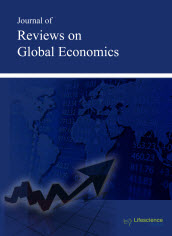jrge
Abstract - Different Wavelengths of LEDs on Cutaneous Wound Healing in Wistar Rats
|
|
Abstract: This study evaluates different wavelengths of LED therapy in Wistar rats skin injuries. LEDs (Light Emitting Diodes) are phototherapeutic resource nowadays, since it is considered a good alternative to Low Level Laser Therapy in injury healing because of the lower cost. Twenty-five male Wistar rats were divided in five groups: Control, Red LED (630-780 nm), Green LED (490-565 nm), Blue LED (440-490 nm) and Yellow LED (590-630 nm). It´s a experimental research that it was performed during 4 weeks. Twenty-four hours after surgical injury (1cm²) was applied LED therapy for 6 minutes during five days. Red LED presented best anti-edematous effects in comparison to the other wavebands. The perimeters were reduced in all groups, but in Green and Red LED groups were significantly diminished (p<0,05) when compared to control and Blue LED groups. The best result of area was with Green LED and worst results with Blue LED. The use of non collimated phototherapy with Red, Green, Yellow and Blue LEDs improves the wounds healing process, mainly with Red wavelength. The non collimated phototherapy with LEDs could be included in Physiotherapy practice for wound healing improvement because of the lower cost in comparison with Low Level Laser Therapy and the benefits of irradiate a bigger area. Keywords: Phototherapy, wound healing, LED, Physiotherapy, Wistar rat.Download Full Article |
Abstract - Intervalling-Effect Bias and Competition Policy
|
|
Abstract: The purpose of this paper is twofold. First, it aims to investigate whether the security’s systematic risk beta estimates change as the infrequent trading phenomenon appears. Second, it attempts to provide useful insight on the impact of mergers and acquisitions on competition policy. For this reason, we employ the models of Scholes and Williams (1977), Dimson (1979), Cohen et al. (1983a) and Maynes and Rumsey (1993) on a small stock exchange with thickly infrequent trading stocks. The empirical results reveal that for some securities the models employed by Scholes and Williams (1977) and Cohen et al. (1983a) improve the biasness of the Ordinary Least Squares Market Model (Maynes and Rumsey, 1993). We argue that competitors gain while merged entities loose or at least do not gain from the clearness of the investigated mergers. Keywords: Intervalling-effect bias, Beta risk measurement, Infrequent trading phenomenon, Mergers and Acquisitions, Competition policy. Download Full Article |
Abstract - Disproportionalityand Business Cycle from Tugan-Baranovskij to Spiethoff
|
|
Abstract: In the second half of the 19th century, German-speaking countries developed a very intense economic debate about crises. Mikhail Ivanovich Tugan-Baranovskij’s analysis may be considered as the point of transition between different crisis theories and the development of organic thinking about the business cycle. It was an integral part of the German debate and had a decisive influence on Arthur Spiethoff’s elaboration – perhaps the most organic analysis of the cycle developed within the German historical school. Arthurs Spiethoff’s influence was recognized by important authors such as Friedrich A. von Hayek and Joseph A. Schumpeter. Both the Austrian economists admitted their debt toward the German scholar in elaborating their business cycle theories. The present paper aims to illustrate one of the important roots in Spiethoff’s approach, an approach that in turn became a crucial reference for other important economists. Keywords: German historical school, business cycles, Spiethoff, Tugan-Baranovskij, disproportionality, Marxism. Download Full Article |
Abstract - Bibliometric Rankings of Journals Based on the Thomson Reuters Citations Database
|
|
Abstract: Virtually all rankings of journals are based on citations, including self citations by journals and individual academics. The gold standard for bibliometric rankings based on citations data is the widely-used Thomson Reuters Web of Science (2014) citations database, which publishes, among others, the celebrated Impact Factor. However, there are numerous bibliometric measures, also known as research assessment measures, based on the Thomson Reuters citations database, but they do not all seem to have been collected in a single source. The purpose of this paper is to present, define and compare the 16 most well-known Thomson Reuters bibliometric measures in a single source. It is important that the existing bibliometric measures be presented in any rankings papers as alternative bibliometric measures based on the Thomson Reuters citations database can and do produce different rankings, as has been documented in a number of papers in the bibliometrics literature. Keywords: Research assessment measures, Impact factors, Bibliometric measures. Download Full Article |























